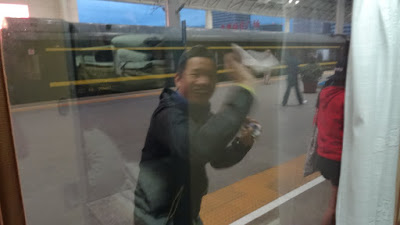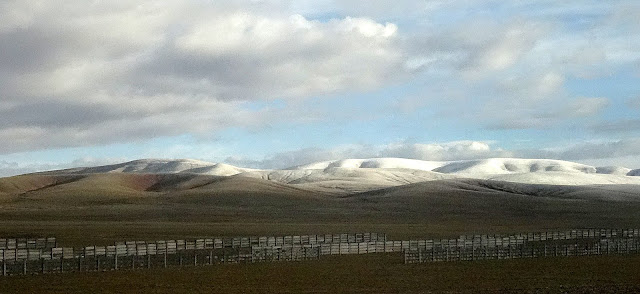Thursday, 8.9.2016 - At Shanghai airport

By MagLev train (magnetic levitation train) into the city. Max speed 430km/h, but in the morning, when we traveled, only 300kmh :-(



First activity was to meet Mey and to hand over our passports. She is the Shanghai based colleague of Peter Yang, the Chinese travel agent who had booked our train tickets, organised the Tibet permits, the guide and driver in Tibet (as since 2008 unattended travelling within Tibet has been forbidden for tourists).
While Mey went to the train station to collect our tickets to Xi’an and Lhasa, we had time for a stroll through Shanghai.



First activity was to meet Mey and to hand over our passports. She is the Shanghai based colleague of Peter Yang, the Chinese travel agent who had booked our train tickets, organised the Tibet permits, the guide and driver in Tibet (as since 2008 unattended travelling within Tibet has been forbidden for tourists).
While Mey went to the train station to collect our tickets to Xi’an and Lhasa, we had time for a stroll through Shanghai.
Shanghai presents itself as …
… idyllic

Ticket Issues
At noon we received a phone call from Peter telling us about a small but relevant mistake that they had made: for the ticket application they had used Friedelinds’s old, invalid passport ID, and not the new one we sent him in April. Therefore the train authorities refused to issue her train tickets. In a six-hour odyssey we tried to convince low and high ranking police and train officials that the old and the new passport belong to the same person. But none of them dared to release the tickets.


Finally we decided to go to the Austrian consulate the following day, luckily a weekday, to ask them to certify that both passports are Friedelind’s. Finally, on Friday at 11am, we received the certificate.




One hour later, without further questions, the train tickets were issued.
Many thanks, dear Mey and Austrian consulate – we are happy, but tired.
The train ride leads through a flat and heavily populated area of China, we pass town after town, each of which with a population of at least one million inhabitants, densly packed in huge apartment blocks. China’s economy has developed rapidly during the last 30 years, but at the cost of low quality of life in big uniform urban centres.


Originally we wanted to travel on a direct train from Shanghai to Lhasa – but due to high season Peter Yang was not able to book two soft sleeper tickets on that train. So he made reservations for the Z252 Shanghai - Xi’an, and the Z264, Xi’an-Lhasa on the next day.
Now we had the excellent opportunity of seeing the impressive archaeological site of the Mausoleum of the first Quing Emperor, 40 km east of Xi’an, boasting the beautiful “Terracotta Army”. (https://en.m.wikipedia.org/wiki/Terracotta_Army)

Now we had the excellent opportunity of seeing the impressive archaeological site of the Mausoleum of the first Quing Emperor, 40 km east of Xi’an, boasting the beautiful “Terracotta Army”. (https://en.m.wikipedia.org/wiki/Terracotta_Army)

China's first emperor, Qin Shi Huang, made his people build this incredible collection of an army, made of terracotta (~210BC). 8.000 warriors, 650 horses and 130 chariots have been excavated and restored by now, but many areas are still untouched, like the still hermetically sealed tomb of the emperor.






Soon after Qin Shi Huan's death his successor destroyed much of the construction , which flattened the figures , until they were rediscovered in 1974 by a local farmer.

Now painstakingly restored:


The town's medieval wall

The Grand Dynasty Culture Hotel


All photos by the author, apart from those marked with 'www', which were taken from various internet sources.












































